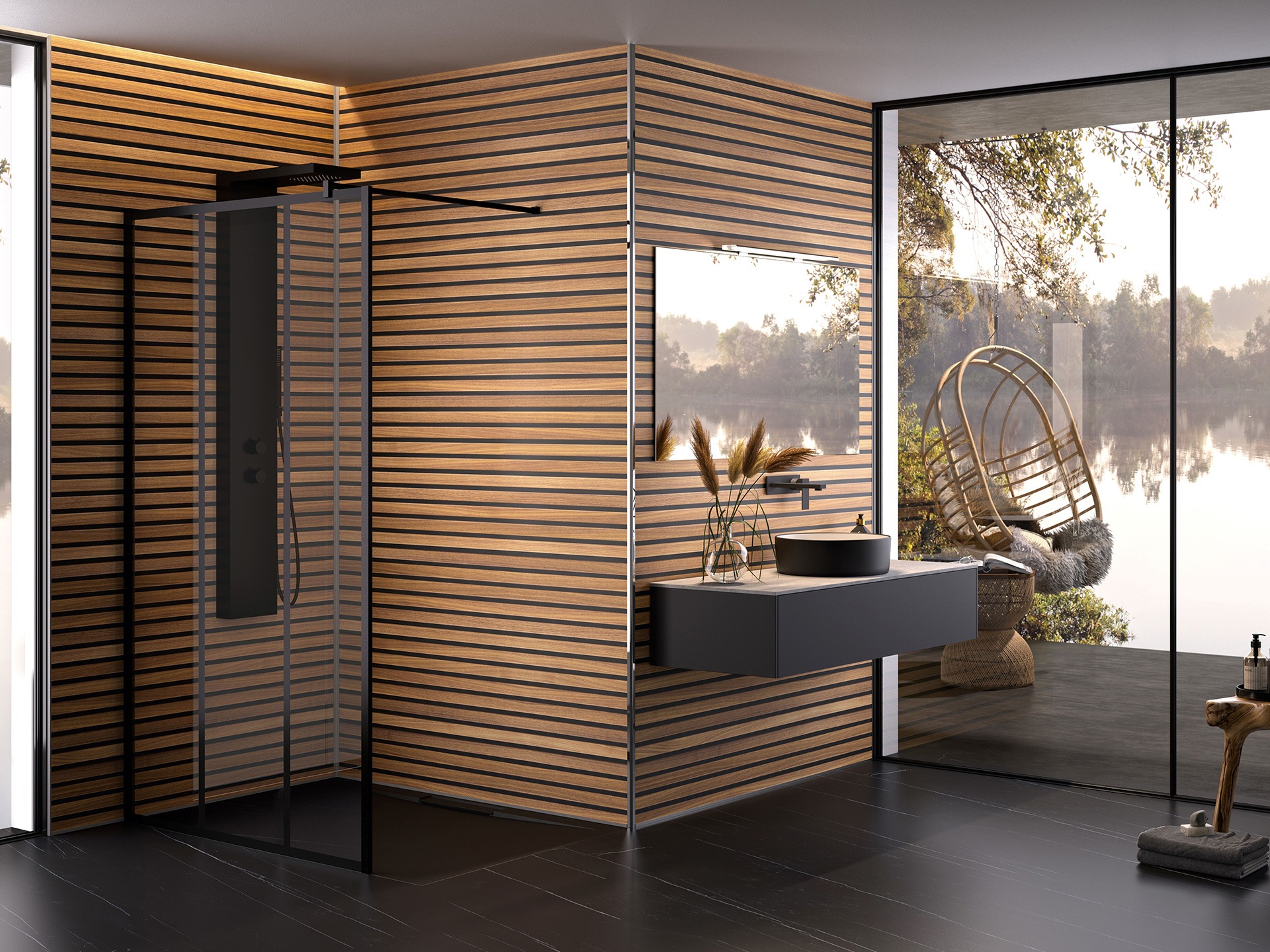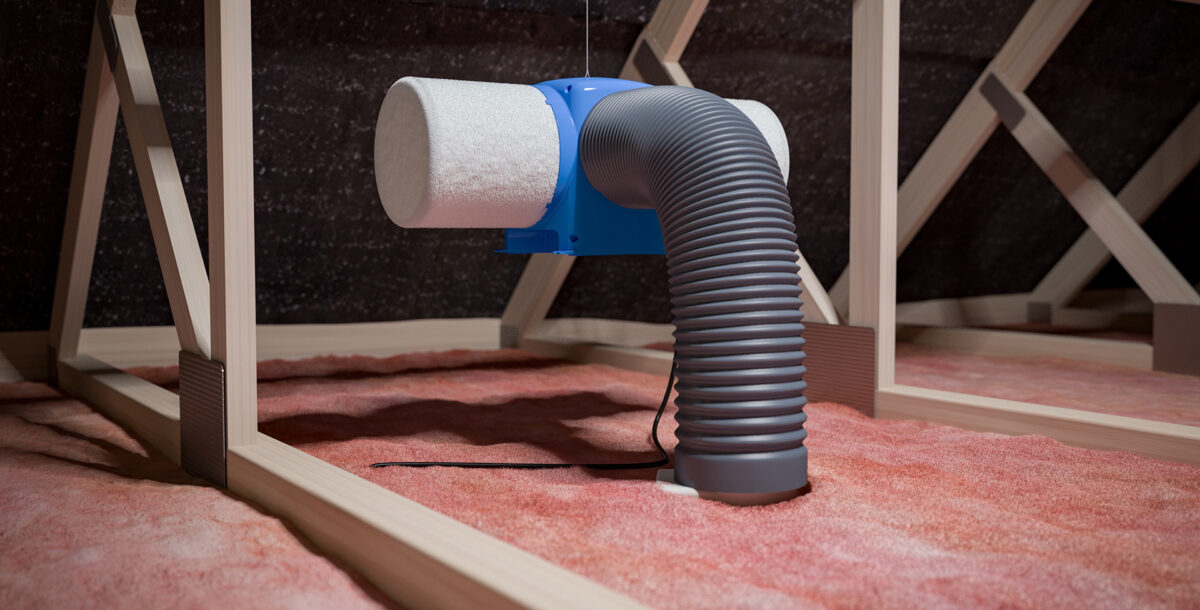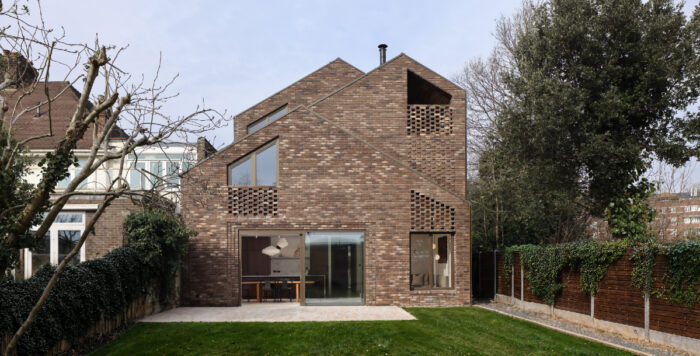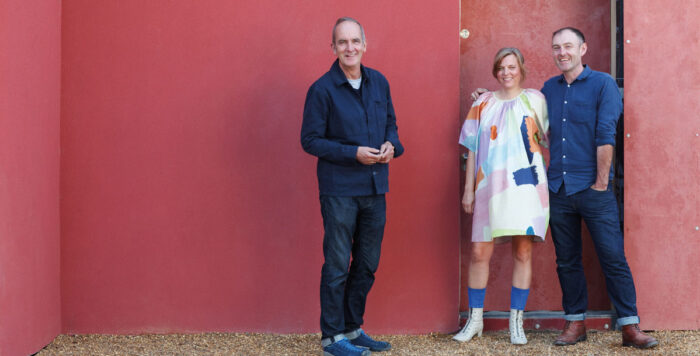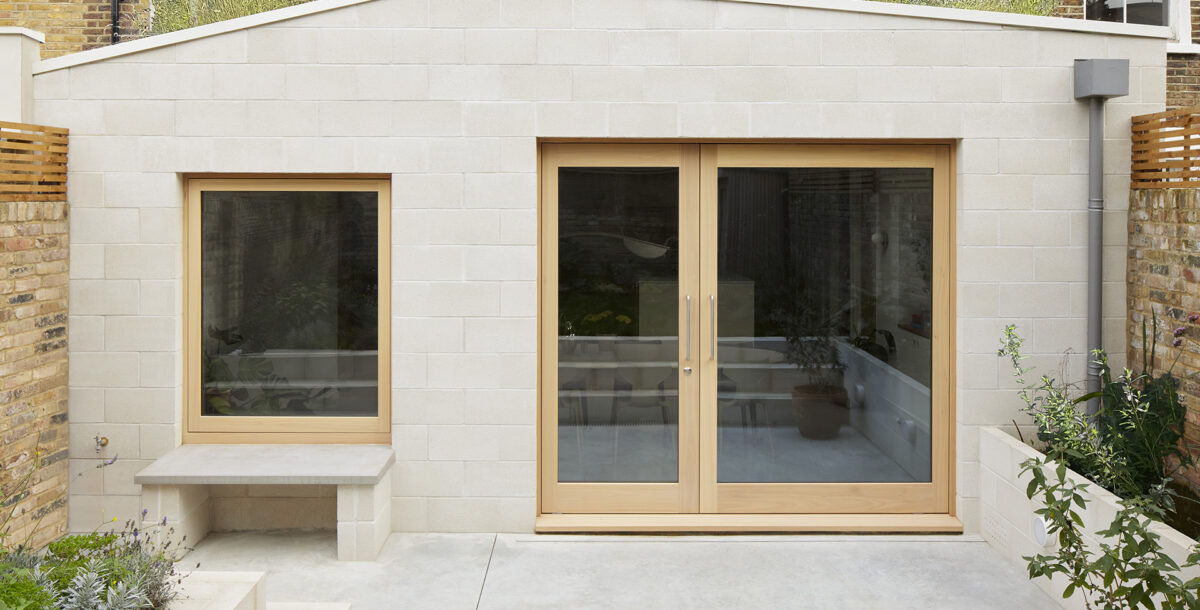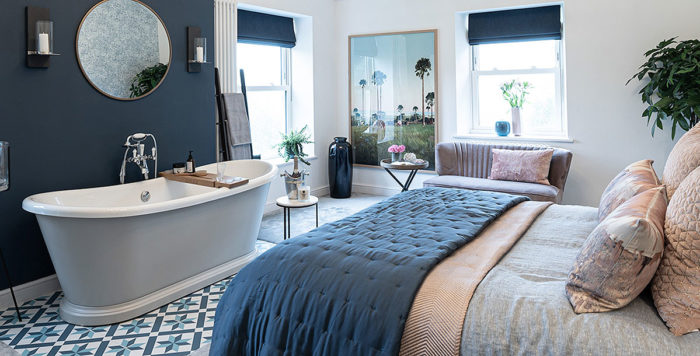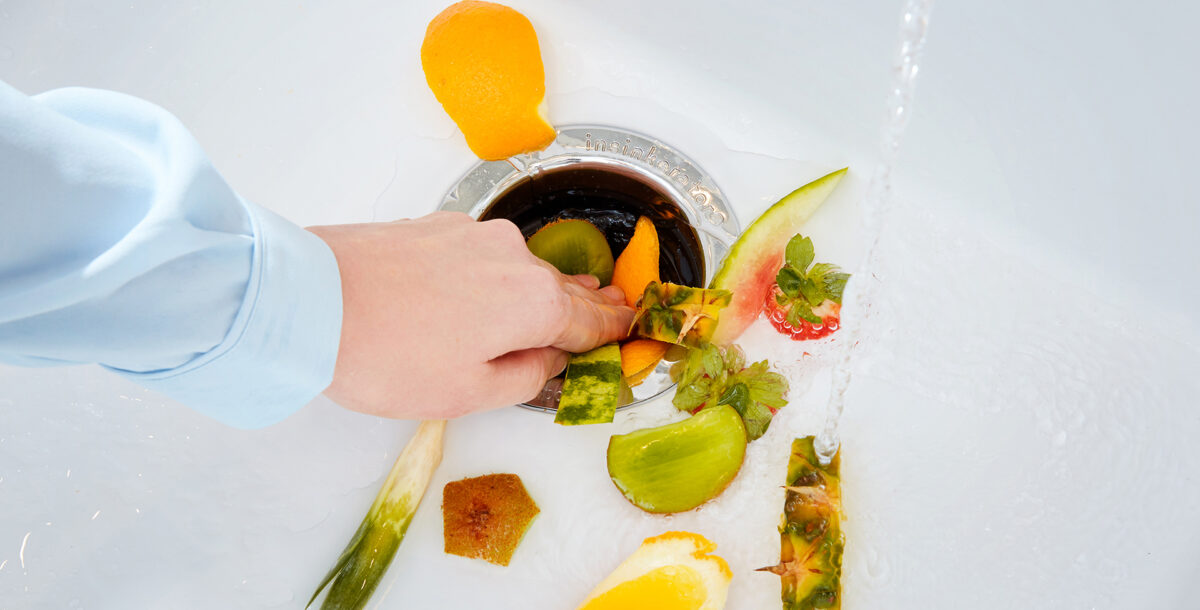Shower panels vs tiles – which is best for your bathroom?
Shower panels are the shiny new alternative to bathroom tiles. We've got everything you need to know about this option for your next bathroom refurb
For the past few years there’s been a new kid on the bathroom block: the shower panel, an increasingly popular alternative to tiles for covering the walls in showers and other parts of the bathroom. Here’s our fact file on this new product and how it compares to tried-and-tested tiles, and how they can be used to create the perfect shower room or bathroom.
What are shower panels?
Shower panels are large sheets of various kinds of plastic or laminate that are fixed to the wall to provide a waterproof surface instead of tiles, in a shower or elsewhere in the bathroom. They are sometimes called bathroom panels or wall panels. Generally, these are all the same thing, though you can also get more expensive bathroom wall cladding made from sintered stone.
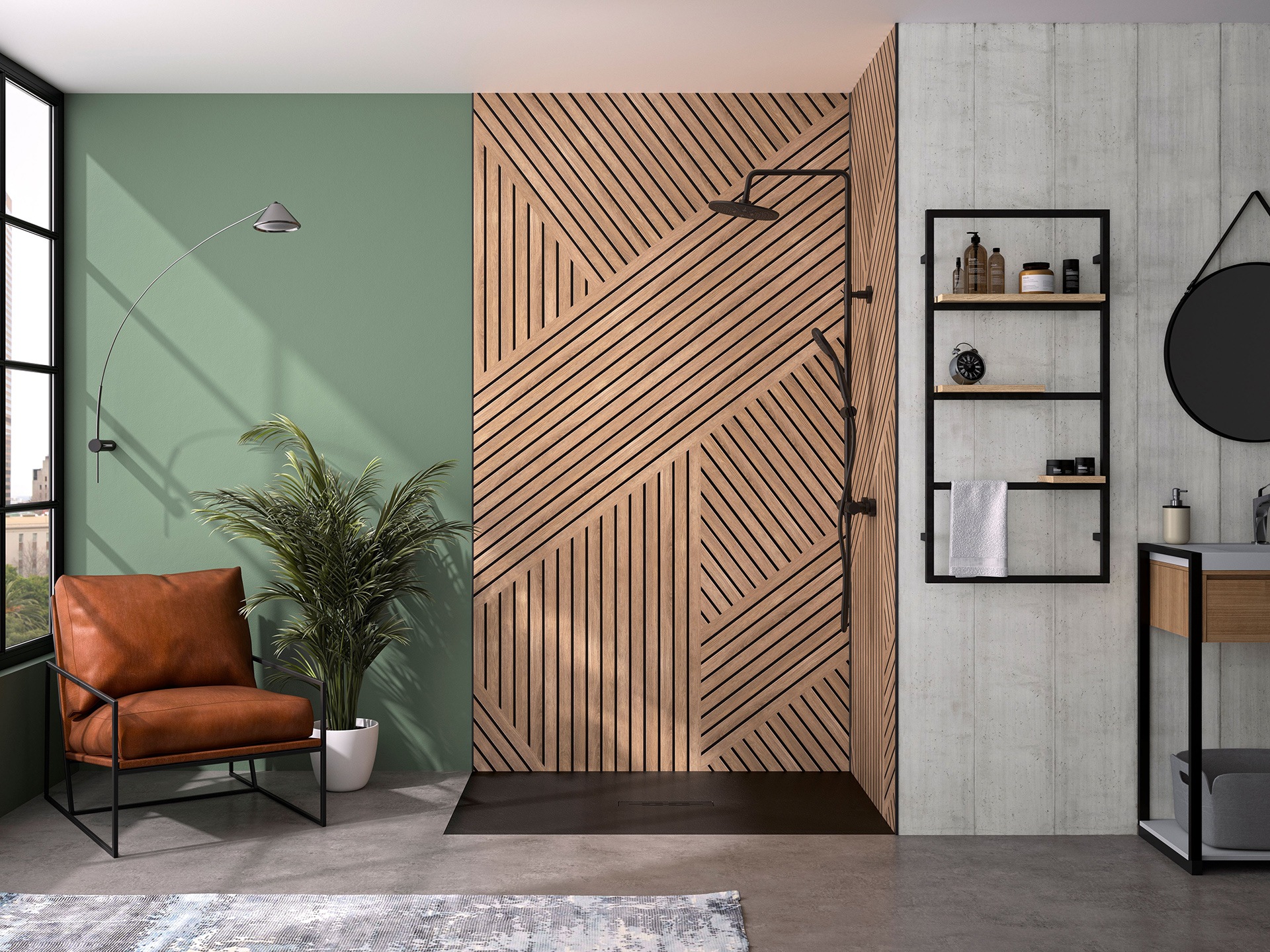
Image credit: Kinedo
What are they made of?
There are four main types of bathroom panel:
- Laminate panels with an engineered wood core
- Laminate panels with a foam core: lighter and designed avoid any problems of the core getting wet then expanding, this type is less common
- Acrylic sheets: lightweight and less rigid, this type of panel often have tile patterns or photographic prints on them
- PVC hollow panels: light and easy to install, this type could be less durable than laminate panels
Tim Warren, from adhesives specialists Adkwik, says, “Laminate panels have a waterproof surface, but they also have a wooden core that can cause problems if it is exposed to water. But this shouldn’t be an issue if they are fitted correctly.”
New products are available, too. For example, Kinedo’s new Kinewall panels have a polyethylene (PE) core with an aluminium layer on either side.
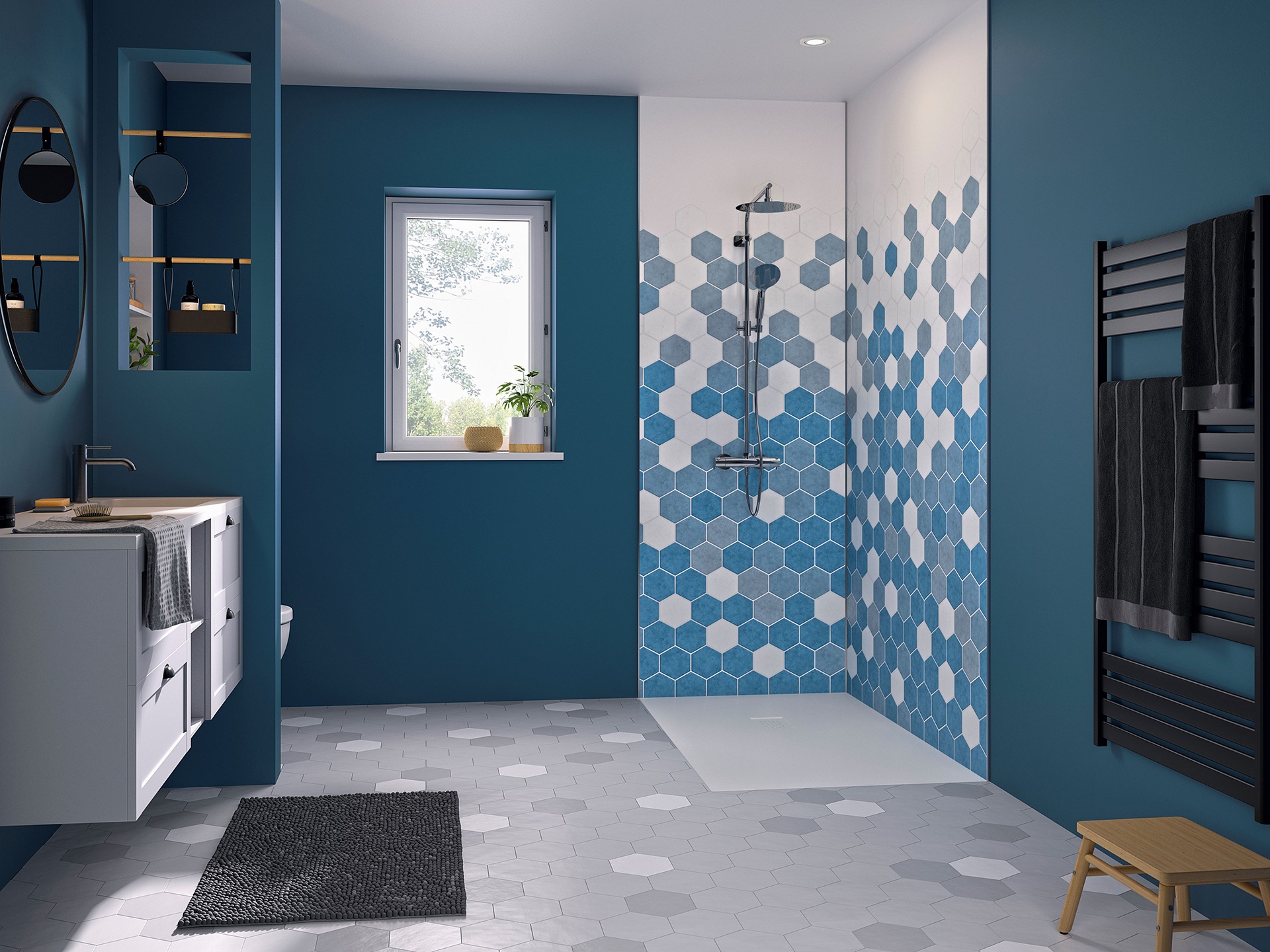
Image credit: Kinedo
How big are they?
Most panels are between 2m and 2.5m high by 0.6m to 1.2m wide. Some companies, such as Showerscape, will custom-make panels to a specific size. Others, such as Fibo, make panels over 3m high, which would suit rooms with high ceilings. You don’t just have to put the panels in the shower, they can be used to cover whole walls of the bathroom.
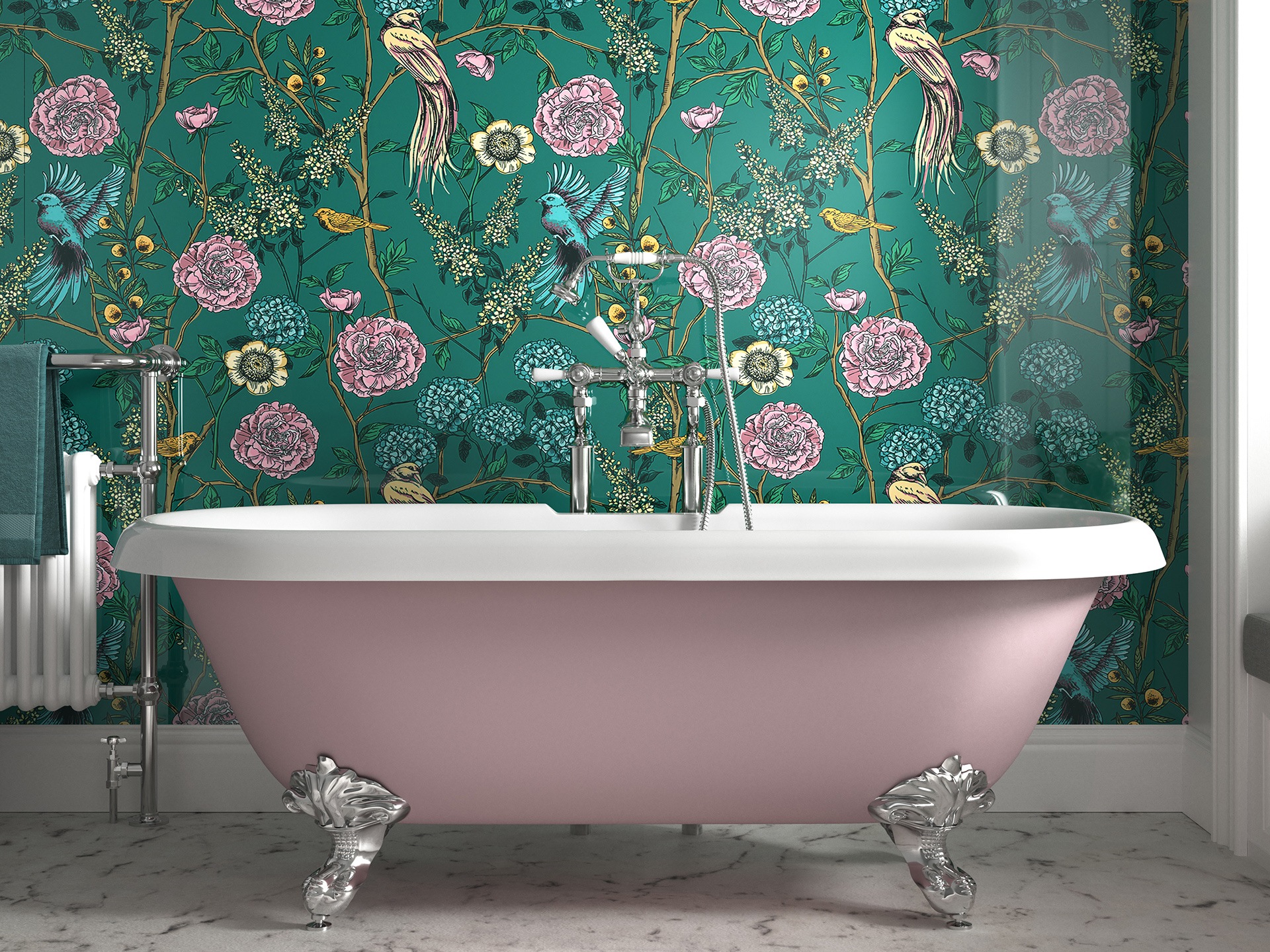
Image credit: Showerwall
How are they fixed to the wall?
The panels are glued to the wall using panel adhesive and sealed at the bottom with liberal quantities of silicone sealant to make a waterproof seal. You can put panels on plasterboard or straight on top of your old tiles. Some manufacturers recommend putting battens on the wall then attaching their panels. This would also be a good idea if the wall you are fixing your panels to a wall that is in a bad condition. You need to follow the manufacturer’s instructions for the particular panels you buy. Solvent-free adhesives are available.
How are the panels joined together?
Most laminate panels fix together with a click-and-lock tongue-and-groove system – similar to the one laminate floor planks are joined with – which makes a waterproof seal. Other panels have square edges and need to be joined with strips of plastic or metal trim. If you are just using two panels to line a shower cubicle, you can choose panels with square edges or use strips of purpose-made edging trim on the outer edges.
There are other trim strips you can use to join panels together at corners, and even plastic skirting boards to use with them. The joints where panels meet the floor or shower tray need to be very, very well sealed with plenty of silicone sealant. Some panels sit in a bottom profile strip. Others are just sealed at the bottom with silicone.
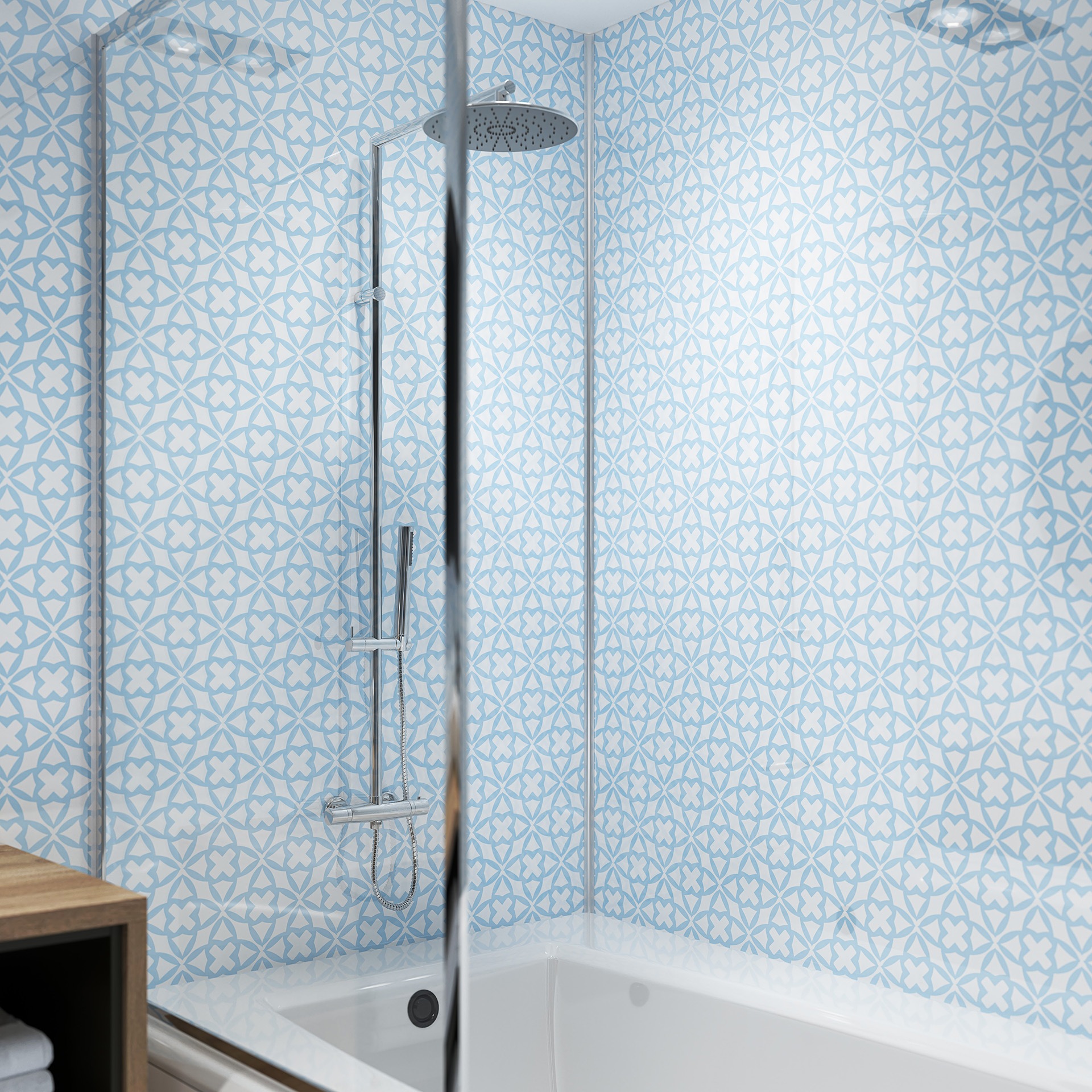
Image credit: Mermaid Panels
What designs are available?
Most panels are designed to look like marble, stone, or concrete. But there are others that are plain coloured, sparkly, wood-look or feature photographic prints of colourful designs. National Plastics puts it like this: ‘They enable you to emulate a high-end, luxury finish without the associated expense, and they’re available in a wide range of different designs and colours so you can match the style and colour palette of the rest of your bathroom.’
Some panels are smooth, some textured, and some embossed to resemble tiles. Some have a high-gloss finish, and some have a matte appearance. To see what’s available, look at the websites of companies such as Showerwall, Victorian Plumbing, Kinedo, National Plastics, Bathroom Marquee, The Panel Company, Mermaid Panels, Multipanel, Igloo Surfaces and Fibo.
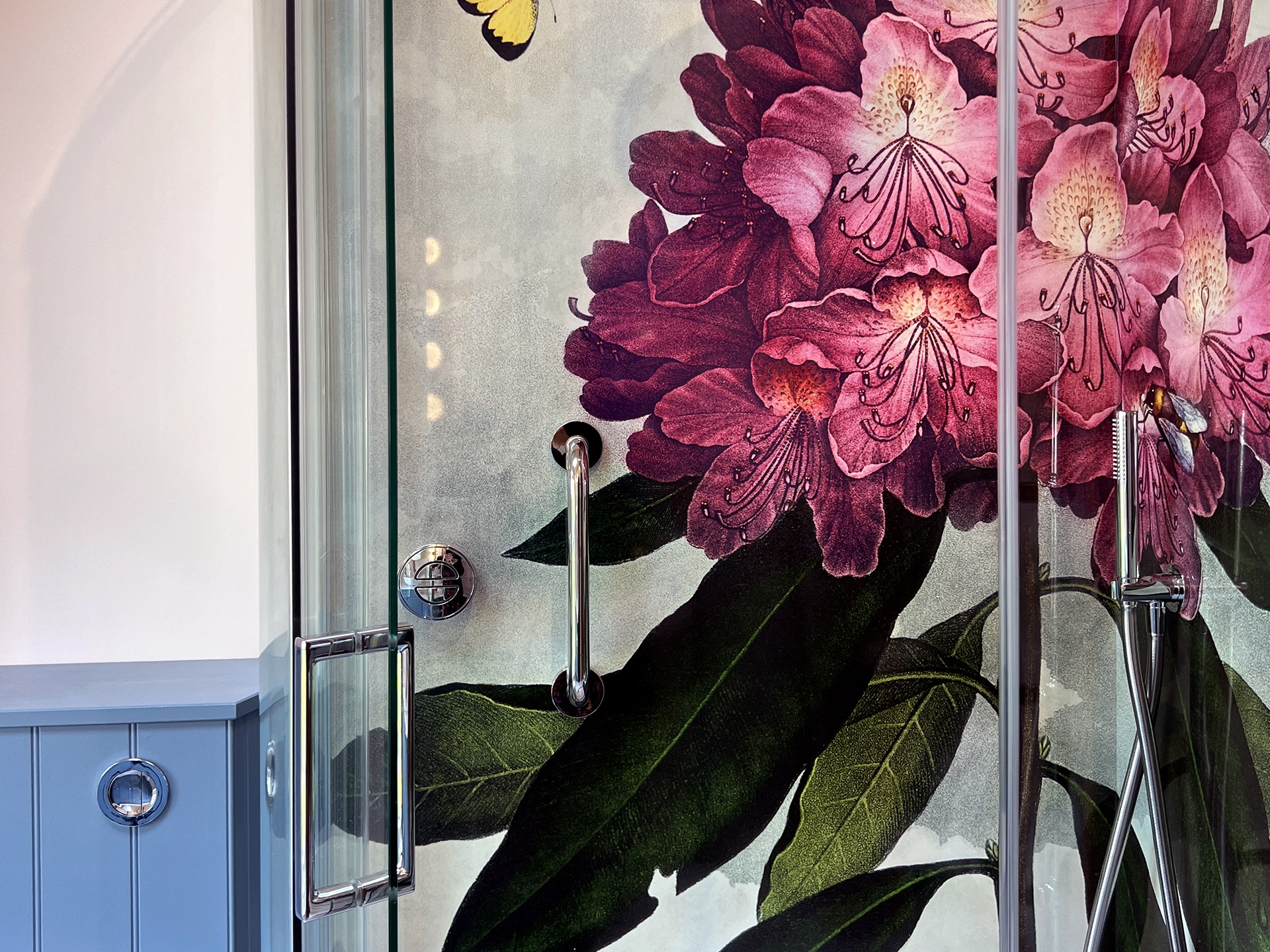
Image credit: Detail of a Showerscape panel c/o IO Design
Can you install them yourself?
If you have competent DIY skills and some basic tools, you should be able to install the panels yourself. National Plastics says, “There’s no required skills or tools needed for installation and they’re easy to do yourself. They can be applied to unprepared walls, over rough plaster with suitable battening, or even on top of existing tiles.”
The video below shows you how it’s done, but the specific details will vary from panel to panel, so read the instructions that come with any panels you buy. Multipanel has this short training course on its website too.
How do you clean them?
According to National Plastics, “Lightweight PVC bathroom panels are extremely low maintenance, requiring only a wipe of a cloth or sponge, followed by rinsing with water to keep them clean.”
Multipanel offers further advice, “Scouring powders or similar products should not be used. Limescale residues may be removed using a soft cloth and a 10% solution of citric or acetic acid, household white vinegar and /or lime juice. Commercial limescale removers are not recommended.”
One thing to watch out for is staining from hair dye and similar products. Multipanel says, “Avoid contact with bleach, tanning agents, hair dyes and root restorers as these products could harm the laminate. If one of these substances accidentally comes into contact with the panel, rinse immediately with plenty of warm water. If substances are allowed to remain on the surface for a long period staining may occur, particularly on textured laminates.”
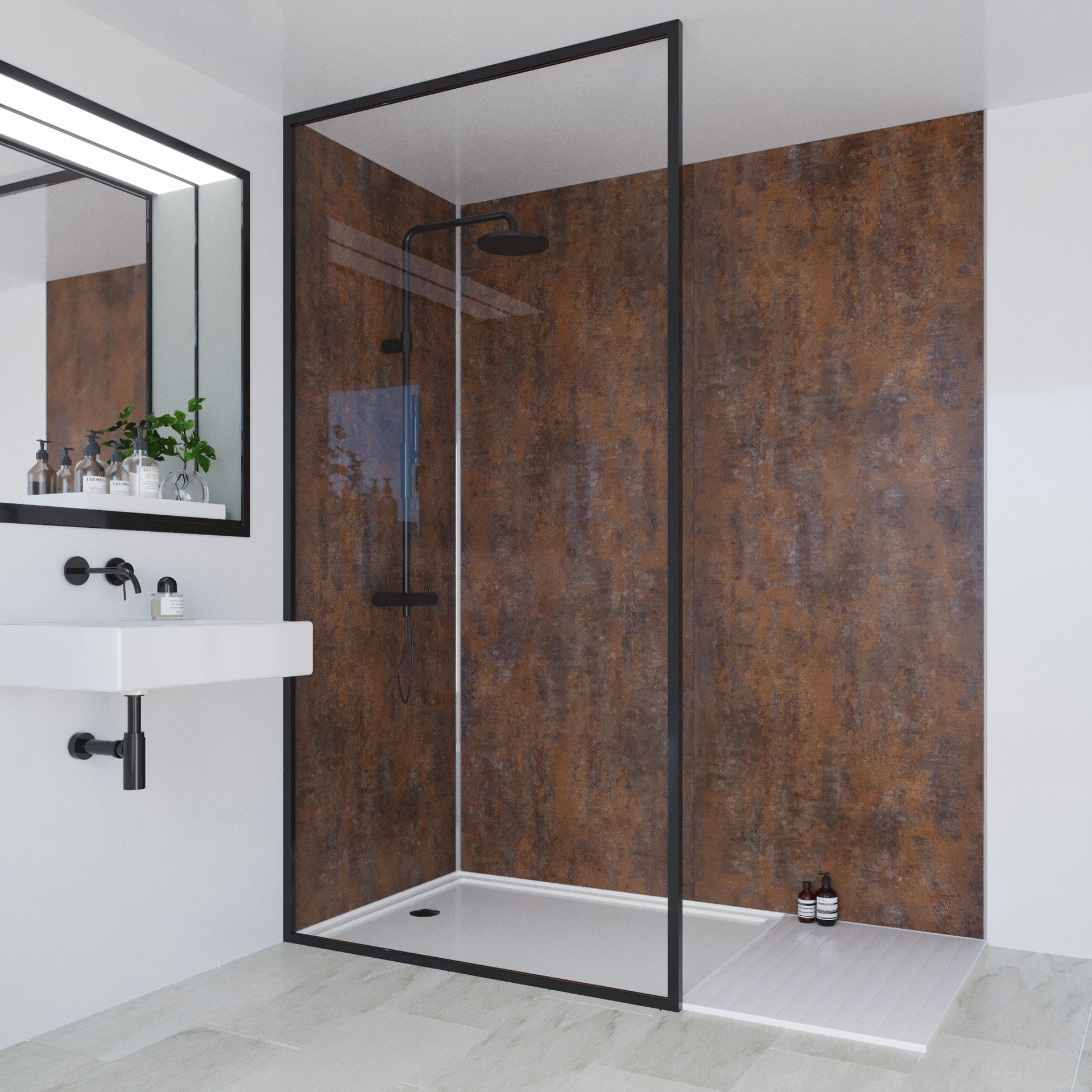
Image credit: Multipanel Linda Barker at Victorian Plumbing
Can I fix things to panels?
You can still fix soap baskets, shower caddies, grab rails, shower seats, etc, to the wall if you have panels. You need to make sure you go through the panel and fix them firmly into the wall. You add them after the panels are up, and need to take special care not to damage the panel, especially if you have hollow PVC panels. Bathroom Marquee has some good instructions on its site showing how to fix things through panels into the wall.
How much are they?
As with tiles, there are products for all budgets. Individual panels range in price from £30 to £1000.
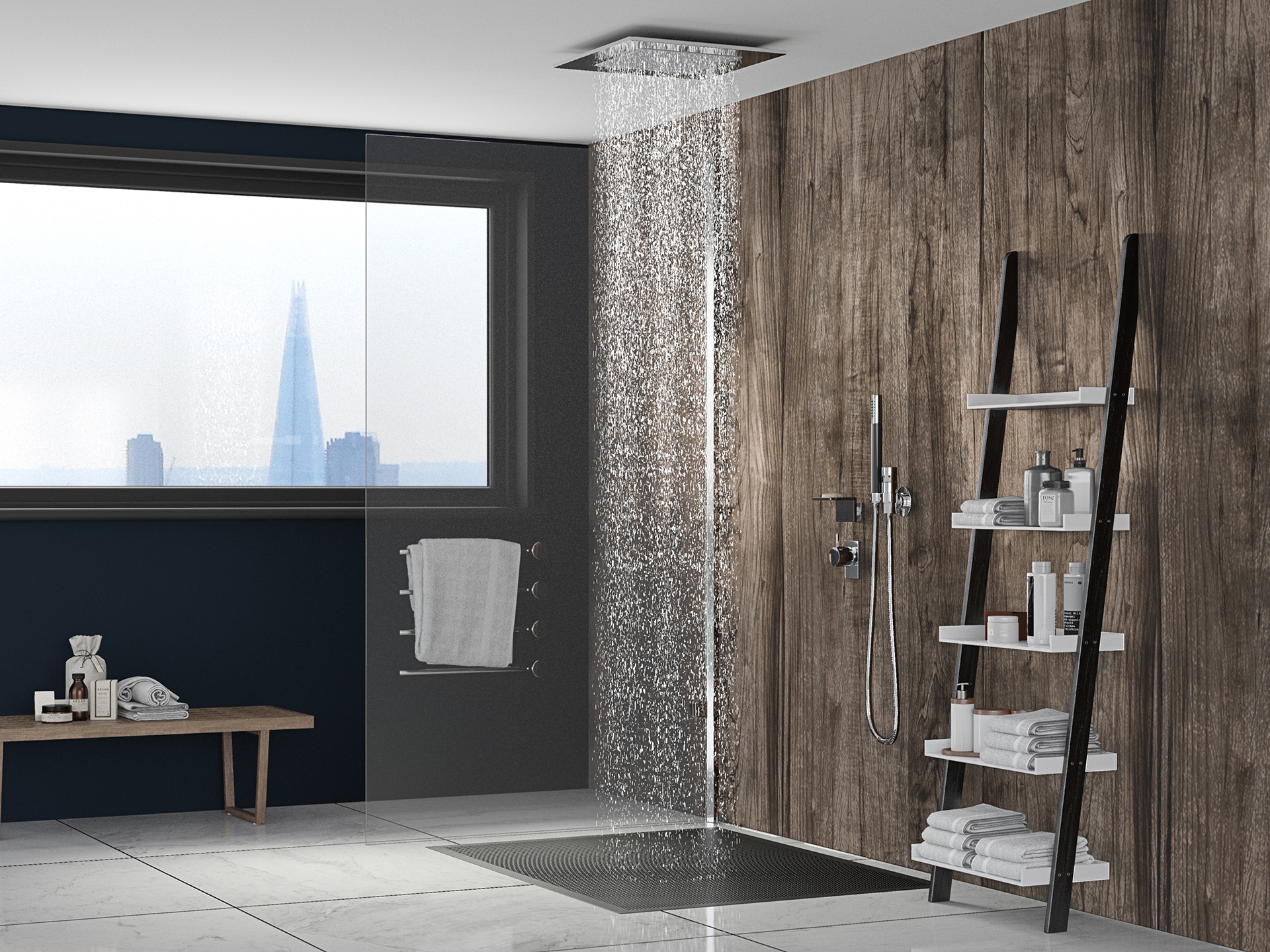
Image credit: Mermaid Panels
How long do they last?
Some panels come with a 10-, 15- or even 30-year guarantee.
Ben Thomson, of Promain paint specialists, says: ‘Wall panels are not as durable as tiles as they tend to get dents or scratches more easily, especially in a busy home. Replacing a discontinued wall panel design can also be more challenging compared to sourcing a tile.’ If a panel gets chipped or seriously scratched, you will probably need to replace the whole thing. Then again, if you need to replace a tile or two, this won’t necessarily be easy unless you’ve kept a few spare tiles back just in case. Both tiles and wall panels can vary slightly in colour and design from manufacturing batch to batch. You might be able to repair a small chip with a coloured worktop sealant and repair product like Colorfill.
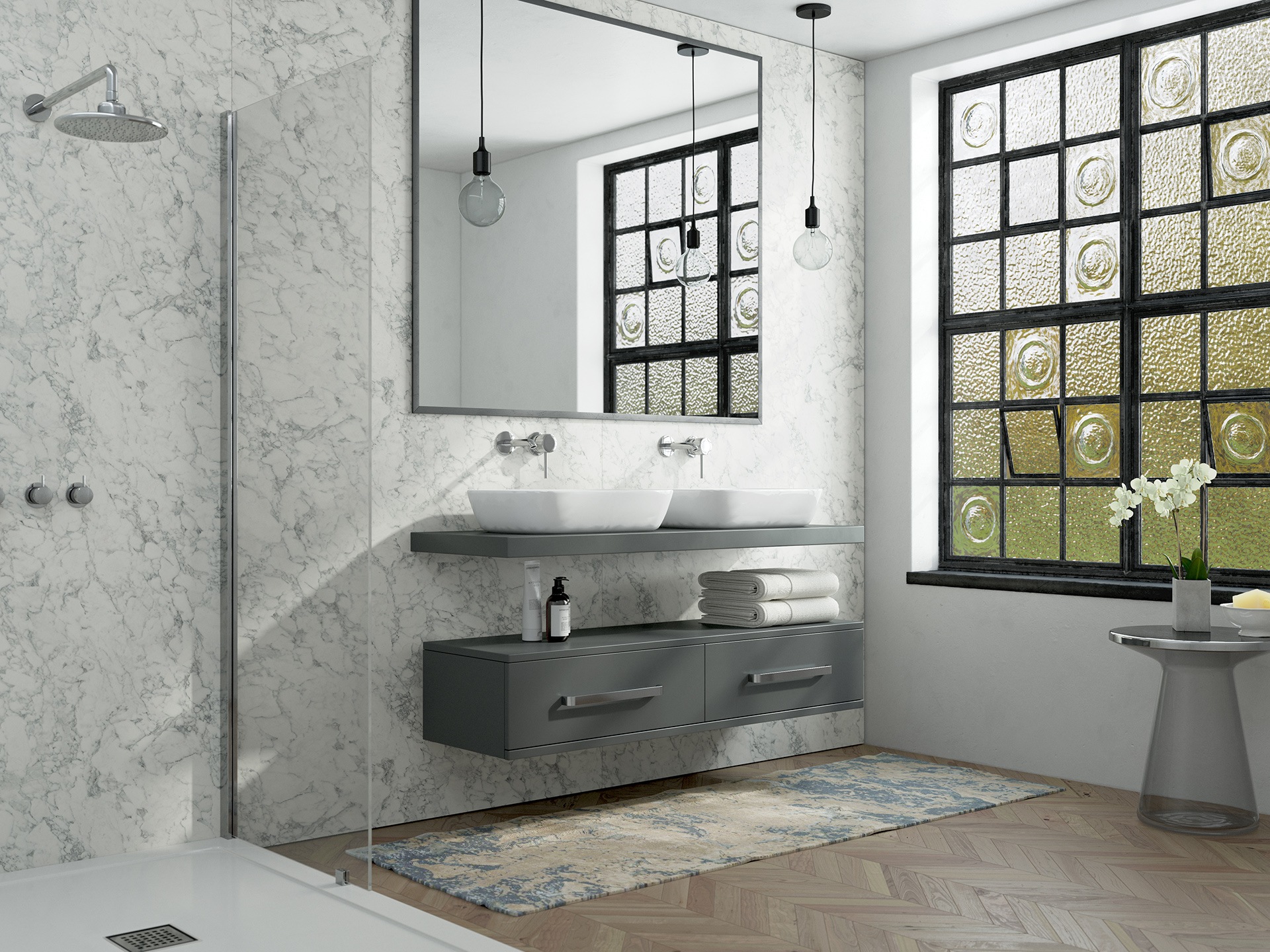
Image credit: Mermaid Panels
Sustainability
Some manufacturers are working to improve the sustainability of their panels. For example, some use Forest Stewardship Council (FSC) certified wood from sustainable, well-managed forests to make the engineered wood core of their laminate panels. Fibo from Norway is one of the best companies in terms of environmental performance, and it provides an environmental product declaration for its panels.
Showerwall is making progess too. For example, it has changed its manufacturing process to use cold presses to make its panels, which require less energy than traditional hot presses. It also uses UV-free inks. Smile Plastics meanwhile, makes panels of recycled plastic that aren’t specifically sold as shower panels but could be used as such.
Laminates are tricky to recycle. PVC can be recycled, sometimes via local recycling centres. Acrylic can be recycled, too, but it is harder to find places where small quantities will be accepted. Hopefully, by the time the panels currently being installed are ripped out, recycling services will be more comprehensive.
PVC remains a controversial material. It contains petrochemicals; some people are concerned about the volatile organic compounds that it can give off; and it can be hard to dispose of responsibly. PVC manufacturers are working hard to improve the material’s sustainability. Some people argue it should be banned, others say that is unnecessary and PVC remains a useful material that’s not easy to replace. (If you want to dig down into the debate, here’s an article covering the topic. The European Chemicals Agency has just brought out a report on PVC and PVC Additives. Meanwhile, here is a summary of the issues around PVC from the perspective of the European Council of Vinyl Manufacturers (ECVM).)
How do they compare with tiles?
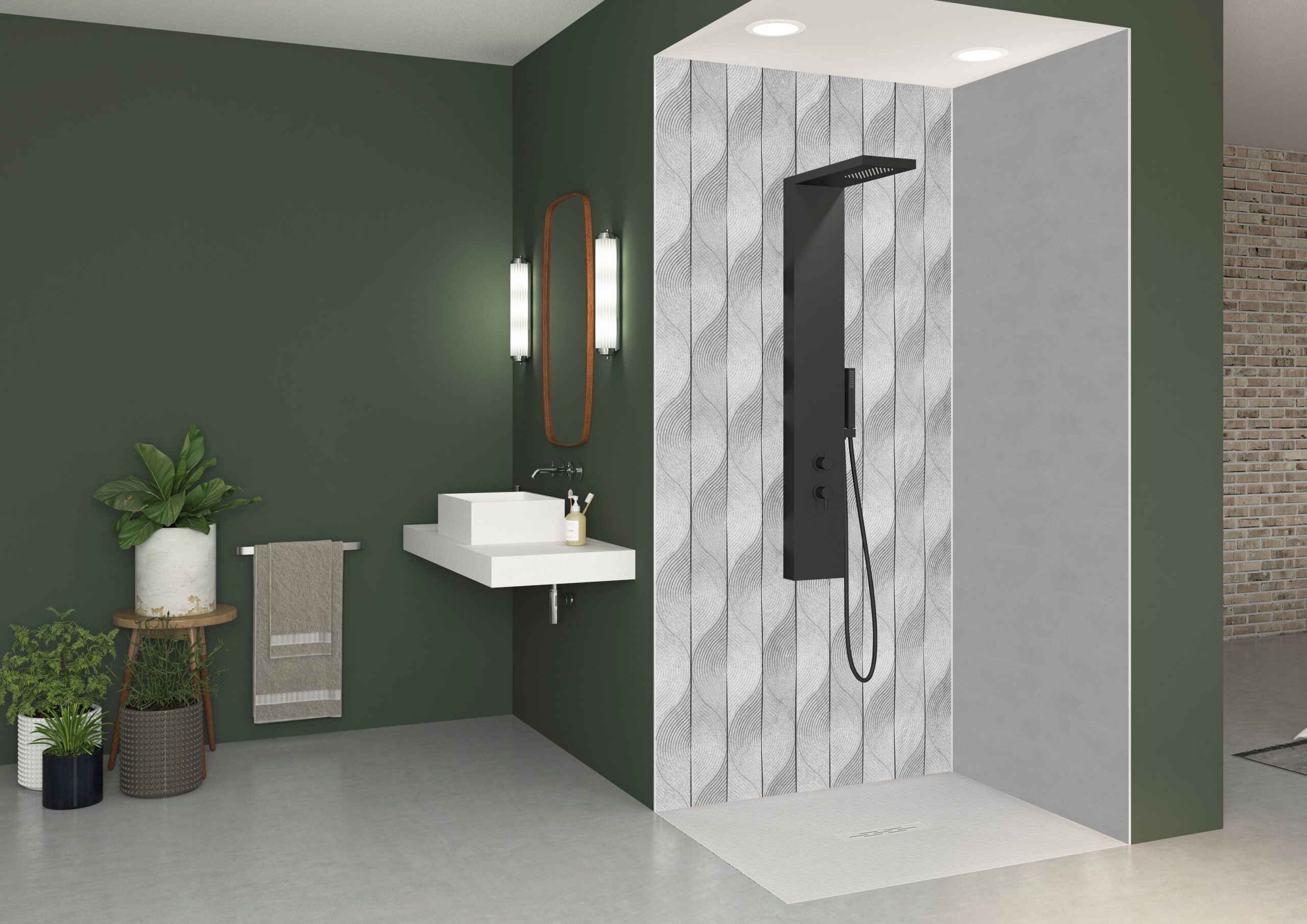
Image credit: Kinedo
It’s easy to see why panels are gaining in popularity versus tiles. The ease and speed of installation, plus the fact they are so easy to clean, makes for an appealing combination. Also, they get rid of the need for grouting, which has always been the weak spot when it comes to tiles: the place where leaks may eventually develop and also very prone to mould. Panels are generally thought to be more hygienic than tiles, and cleaning grout is, after all, a thankless business.
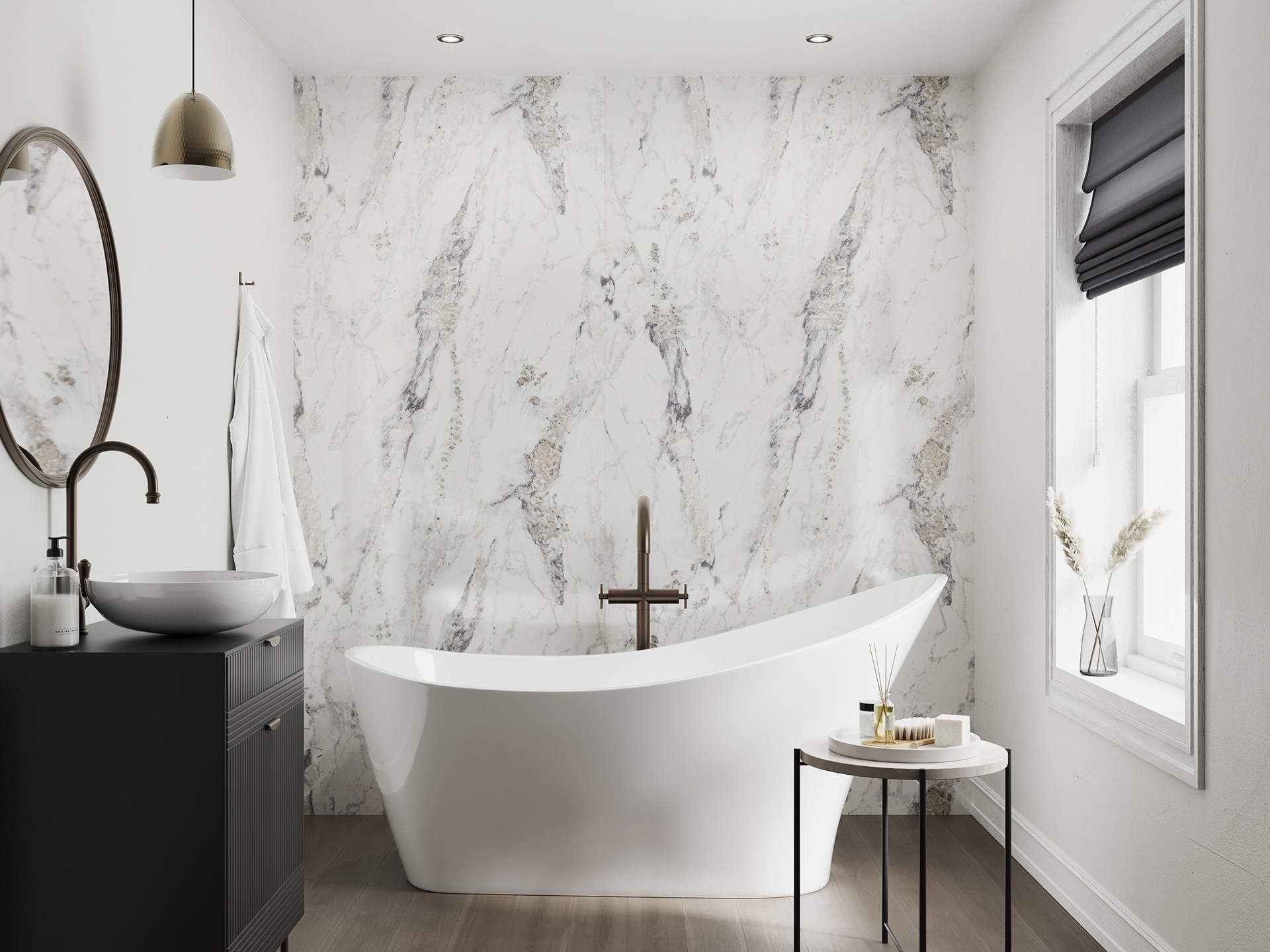
Image credit: Showerwall
David Cruz, of MyJobQuote.co.uk, puts it like this, “Tiling a bathroom, depending on its size, can take days for a professional tiler and even longer for a weekend DIYer. It’s also not the easiest of jobs to tackle yourself and needs a lot of care and attention to detail to get it right. Working with porcelain bathroom tiles is particularly difficult as they are very hard and therefore difficult to drill through when applying fittings.
“Bathroom panels are much easier and quicker to install for a DIYer and can be fitted over a single weekend even in a large bathroom. You can cut and drill through them with regular woodworking tools, and they produce less mess than cutting tiles with the associated dust.”
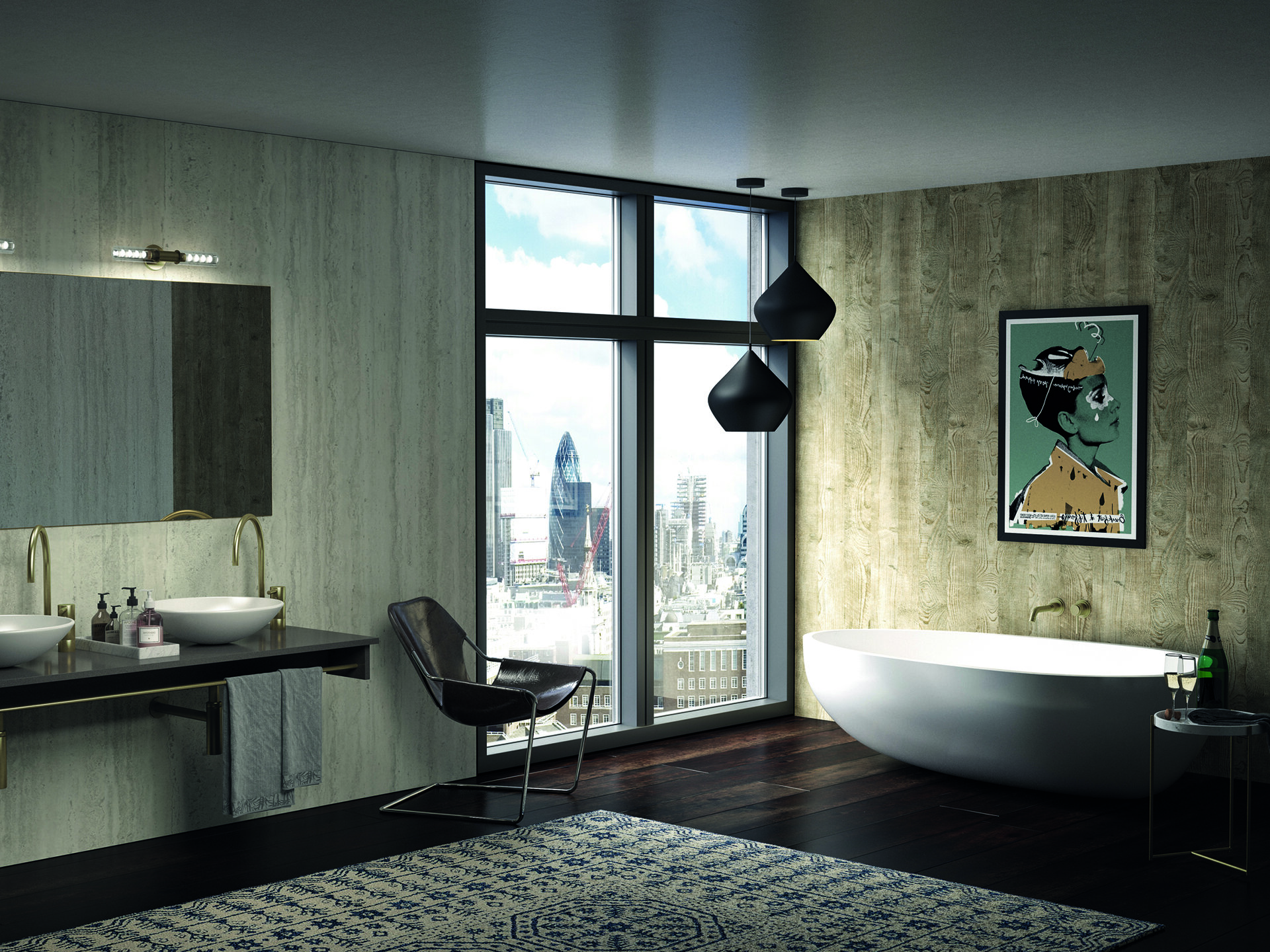
Image credit: Wilsonart
Leigh Price, of Real Stone, Tile & Bathroom says, “Wall panels are great when installed across large walk-in shower areas, and in smaller bathrooms, where the shower/bath is located. The click-and-lock installation allows for complete protection against constant exposure to water, as opposed to grout which is liable to staining and possible water penetration over time. Problems arise, however, when customers wish to take wall panels across all four walls of the bathroom, as cutting around windows can leave unsightly joints that can’t be concealed with grout lines.
“Another design point to consider when choosing between tiles and wall panels is whether you wish to match your walls and flooring, as this can only be achieved through tiling. Plus, there is still a far wider variety of designs if you opt for tiles, as wall panels are fairly new to the market.”
As Wayne Spriggs from Lusso puts it, ‘The diverse palette of tiles, from decorative mosaics to muted marbles, speaks to their meticulous craftsmanship, reflecting a timeless aesthetic which simply cannot be replicated by wall panels.”
The handmade quality of high-end tiles is hard to beat with a sheet of plastic, but, as you can see from the images accompanying this story, the wall panels are getting better looking all the time…
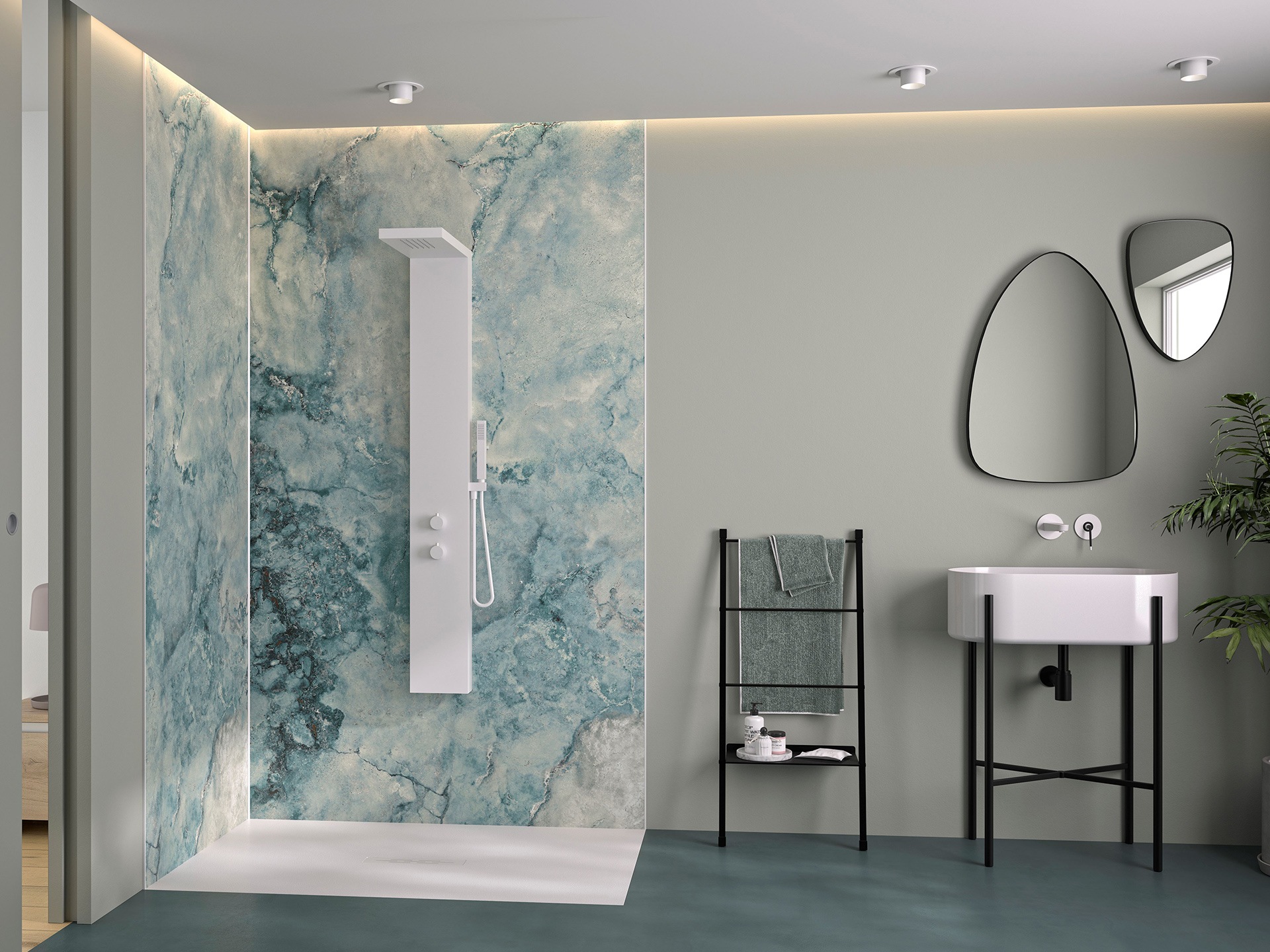
Image credit: Kinedo
When they first came out, panels were fairly restricted in the range of designs available: lots of very nice looking but very similar faux marbles and faux stones. But some companies are pushing the envelope and coming up with more creative, fun and contemporary designs. Meanwhile, other firms are focused on improving the sustainability of the products; though, when it comes to sustainability, tiles probably still have the edge over panels. They are not without their own issues, however: making ceramics requires a high energy input, for example. And it’s best to choose a non-toxic, eco-friendly grout.
In the end, only you can decide whether shower panels are the right choice for your home.
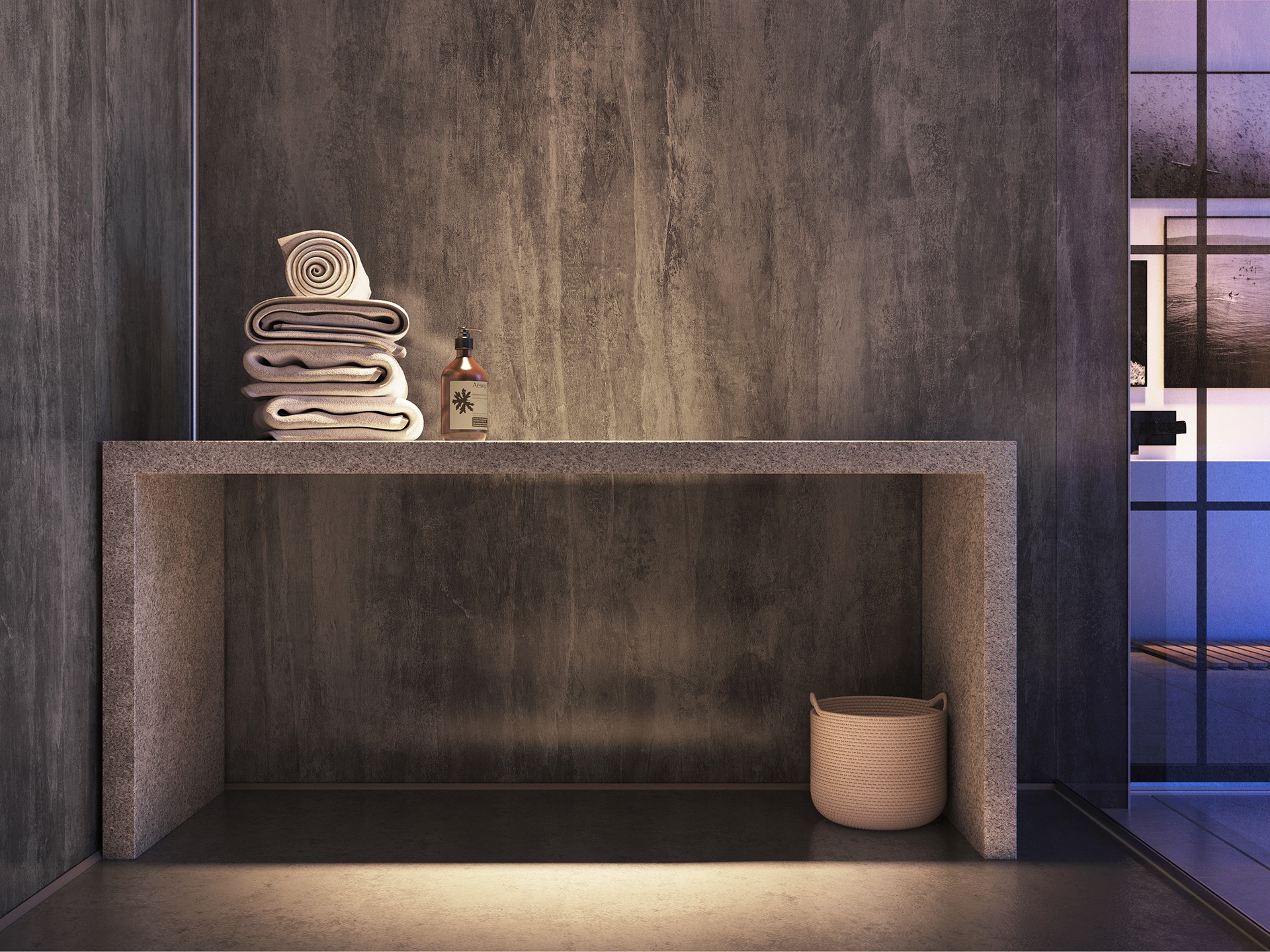
Image credit: Showerwall

